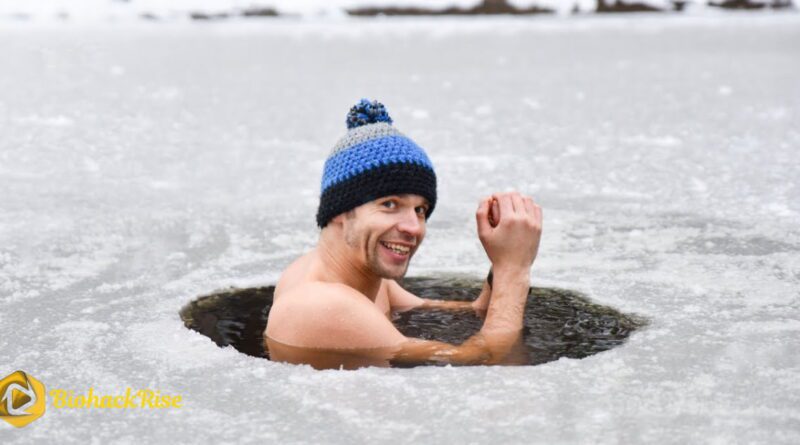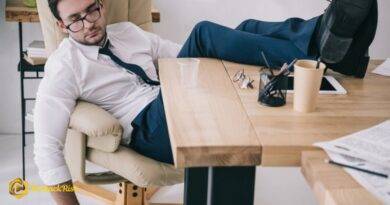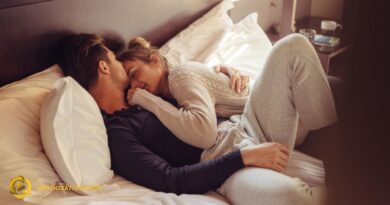Cold Exposure for Better Sleep: Simple Night Hacks
Struggling to fall asleep or waking up feeling tired? You’re not alone. Many people are turning to natural methods to improve their sleep.
Cold exposure is one of the simplest and most effective hacks. By adding a bit of chill to your nightly routine, you can help your body relax, fall asleep faster and enjoy deeper rest.
In this article, we’ll explore easy cold exposure tips you can try tonight to boost your sleep quality, no expensive gear or complicated steps needed.
Understanding Cold Exposure
Cold exposure has been around for centuries as a healing modality, but it’s recently surged in popularity, especially for its potential impact on sleep. If you’ve ever jumped into a cold shower and then found yourself oddly relaxed afterward, you’re not alone.
When your body is exposed to cold, blood vessels constrict in a process called vasoconstriction, which is followed by vasodilation as your body warms back up. This rebound effect creates a calming, sedative-like state, which prepares you for better sleep.
The Link Between Temperature and Sleep
Your body temperature plays a crucial role in your ability to fall and stay asleep. In fact, your core body temperature naturally drops by about 1 to 2 degrees Fahrenheit during the night, signaling to your brain that it’s time for rest.
When you expose yourself to cold in the evening, you’re telling your body it’s time to wind down. This process helps regulate melatonin production; the hormone responsible for sleep.
The Science Behind Cold Therapy and Sleep Quality
Your nervous system is like the command center of your body and it’s highly responsive to temperature changes. Cold exposure activates the parasympathetic nervous system, the part responsible for “rest and digest” functions.
When you’re in cold water, your body initially reacts with a stress response, your heart rate spikes, your breathing becomes shallow and adrenaline rushes in.
But stay in just long enough (around 2-3 minutes for cold showers or 5-10 minutes for cold plunges), and your body begins to adapt. It shifts gears into a relaxed, calm state, which sets the stage for deep, uninterrupted sleep.
Sleep Cycle Regulation Through Cold Therapy
Sleep is divided into stages, light sleep, deep sleep, and REM. Each stage has a unique role in your overall rest and recovery. Deep sleep, in particular, is when most physical recovery occurs. During this stage, your body releases growth hormone, repairs tissues, and consolidates memory.
Cold exposure has been shown to increase time spent in deep sleep. That’s because it helps you reach that stage faster and stay there longer. The drop in core temperature is a known cue for your body to enter deep sleep more efficiently.
Benefits of Cold Showers Before Bed
Taking a 5-minute cold shower 60–90 minutes before bed has been shown to decrease sleep latency dramatically. This is because the cold-water pre-cools your body, making it easier for your brain to initiate sleep mode.
Cold showers also contribute to better sleep continuity, meaning fewer wakeups during the night. The calming effect on the nervous system allows you to stay in the restorative stages of sleep longer, so you wake up feeling genuinely refreshed instead of groggy.
Hormonal Balance and Stress Relief
One of the underrated benefits of cold showers before bed is their ability to balance hormones and reduce stress. The initial shock triggers an increase in endorphins and norepinephrine, both of which are known mood stabilizers.
Cold exposure also helps suppress cortisol, the body’s primary stress hormone. Lower cortisol levels are directly associated with better sleep quality and reduced sleep disturbances.
Cold Plunge and Sleep Quality
Unlike a cold shower, a cold plunge involves full-body immersion in water temperatures typically ranging from 50°F to 59°F. Cold plunges have a deeper and longer-lasting effect on body temperature regulation and nervous system balance.
Many biohackers and wellness enthusiasts report falling into deeper sleep cycles after regular cold plunges. The reason? Prolonged cold exposure encourages the release of melatonin and reduces core temperature at a faster rate.
The Circadian Rhythm and Body Temperature Alignment
Your circadian rhythm, the 24-hour cycle that governs your sleep-wake patterns, is heavily influenced by light, hormones and yes, body temperature. One of the most effective ways to “reset” or realign a disrupted circadian rhythm is through cold exposure.
Taking a cold plunge in the evening can help reinforce your body’s natural wind-down signals. It tells your system that it’s time to shift gears from active to restful, syncing your body’s rhythms with your environment.
Ice Baths for Insomnia
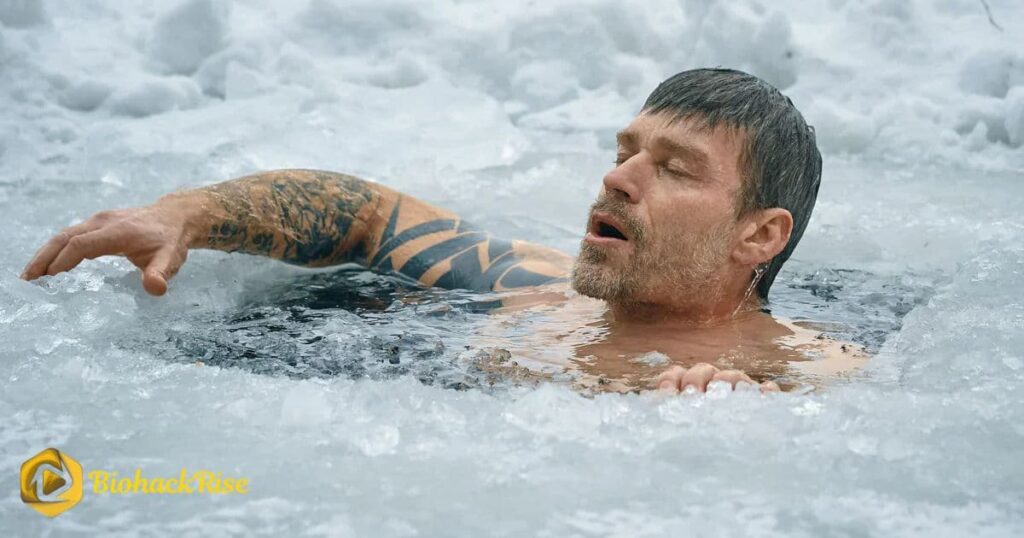
If you’ve been relying on sleep aids or melatonin supplements to get through the night, ice baths might offer a natural alternative that’s both effective and sustainable.
When done properly, cold water immersion taps into your body’s own ability to induce sleep by calming the nervous system, lowering heart rate and increasing the production of sleep-enhancing neurotransmitters like serotonin.
Anecdotal Evidence and Clinical Insights
In wellness communities and forums, people report falling asleep faster, sleeping deeper, and waking up more refreshed after incorporating ice baths into their nighttime routines.
“A small 2018 study observed that cold water immersion before bed improved the sleep quality of elite athletes, showing a marked increase in time spent in deep sleep.“
“Another trial from 2021 explored cold exposure as a method of circadian rhythm alignment and found significant improvements in both sleep duration and efficiency.“
Crafting a Nighttime Cold Therapy Routine
No one wants to jump into a tub of ice water without a plan. Creating a consistent nighttime cold therapy routine is essential if you want to see real results.
Here’s a sample routine to get you started:
- 8:00 PM: Light dinner (avoid caffeine or heavy meals).
- 9:00 PM: 5–10 minutes of light stretching or yoga.
- 9:30 PM: Cold exposure (5-minute cold shower or 10-minute ice bath).
- 9:45 PM: Dry off and change into warm, comfortable clothes.
- 10:00 PM: Engage in a calming activity, reading, journaling or meditation.
- 10:30 PM: Lights out in a cool, dark room.
Best Time for Cold Shower for Sleep
Here’s a question that pops up a lot: Should I take my cold shower in the morning or at night? The answer depends on your goals. If you’re aiming to boost alertness and energy, mornings are great. But if your mission is better sleep, then evenings take the crown.
A cold shower in the evening helps bring down your body’s core temperature, preparing it for sleep. This mimics the natural thermoregulatory process your body goes through at night.
It also reduces muscle tension, slows the mind, and activates parasympathetic pathways that are essential for restful sleep.
How Timing Affects Sleep Onset?
The time you take your cold shower matters too early and the effects may wear off before bed. Too late, and your body may still be in recovery mode. The sweet spot is about 60–90 minutes before you plan to sleep.
This timing allows for:
- A proper temperature drop followed by natural rewarming.
- Peak parasympathetic activation.
- Enhanced melatonin secretion.
Cryo Chamber Sleep Benefits
Cryotherapy triggers an intense cold shock response that lasts for just 2–3 minutes. This rapid exposure activates the vagus nerve, stimulates blood circulation and kick-starts the parasympathetic nervous system, all of which are key factors in promoting restful sleep.
What makes cryotherapy unique compared to cold showers or ice baths is its ability to induce these effects in a fraction of the time, with minimal water contact or setup.
Cold Exposure Sleep Hacks Using Cryotherapy
Looking to get the most out of your nighttime cryo sessions? Here are some proven sleep hacks using cryotherapy:
- Time It Right: Schedule your session between 6 PM and 8 PM. This gives your body enough time to recover and enter a relaxed state before bed.
- Pair with Magnesium or CBD: These natural supplements enhance the calming effects of cryotherapy and can support deeper sleep.
- Wear Light Layers Post-Session: Your body will warm itself up naturally, avoid hot showers immediately afterward to maintain the cooling benefits.
- Hydrate Properly: Cold exposure dehydrates the body slightly; drinking water afterward supports optimal recovery and promotes restful sleep.
- Avoid Blue Light Exposure: After cryotherapy, keep screens off. Let your mind continue its descent into calmness without stimulation.
Cold Therapy Tools and Equipment
For those who prefer to stay home but still want the benefits of cold therapy, there are several tools and devices designed specifically for personal use.
You don’t need a professional setup to improve your sleep through cold exposure, you just need the right gear.
Let’s start with the basics:
- Cold Packs and Gel Mats
- Cooling Sleep Pads
- Cooling Compression Sleeves
Best Cryotherapy Devices for Home
Thanks to advancements in wellness tech, you can now bring the benefits of cryotherapy into your home. While full cryo chambers are still costly, several home-friendly devices mimic the effects without the need for massive equipment or professional settings.
Here are some of the best at-home cryotherapy tools:
- Cryo Gloves and Slippers
- Cold Air Machines
- Localized Cryo Massagers
- Wearable Cooling Vests
Essentials for Setting Up Your Own Ice Bath at Home
With a few essential items and a bit of preparation, you can turn your bathroom, balcony, or backyard into a mini recovery oasis.
Here’s a basic checklist for your ice bath setup:
- Tub or Container: You can use a galvanized steel tub, inflatable cold plunge, or even a large trash bin (clean, of course). Make sure it’s big enough to submerge your body up to your chest comfortably.
- Thermometer: Monitoring water temperature is crucial. Aim for 50°F–59°F (10°C–15°C) for sleep-enhancing effects.
- Bags of Ice or a Water Chiller: You’ll need a consistent source of cold water. For most users, 20–40 pounds of ice will do the trick. If you’re serious about daily use, consider investing in a portable chiller system.
- Towels and Robe: Keep warm, cozy items nearby to wrap up in after your plunge.
- Timer: Stick to around 5–10 minutes to start. Use a waterproof timer or your phone (safely away from water) to monitor your session.
- Comfortable Setup Environment: Add non-slip mats, waterproof lighting, or even calming music to create a more inviting space.
DIY vs. Professional Equipment
When setting up an ice bath at home, you’ll be choosing between DIY solutions and professional-grade equipment. Both options have their advantages, what you choose depends on your goals, budget and space.
DIY Ice Bath Benefits
- Cost-Effective: You can build a setup for under \$100 using a livestock tub and store-bought ice.
- Customizable: Modify it to your liking with essential oils, salts, or even LED lights for ambiance.
- Portable: Easy to drain, clean, and move around if needed.
Downsides
- No built-in temperature control.
- Ice costs can add up over time.
- Manual setup each time you use it.
Professional Ice Bath Benefits
- Temperature Control: Many models include digital chillers or recirculating systems for consistent temps.
- Time-Saving: No need to haul ice bags or refill constantly.
- Durability: Made with long-lasting materials designed for daily use.
Downsides
- Higher upfront cost (ranging from \$500 to \$5,000).
- May require space, maintenance and proper drainage.
Portable Cold Plunge Tub Options
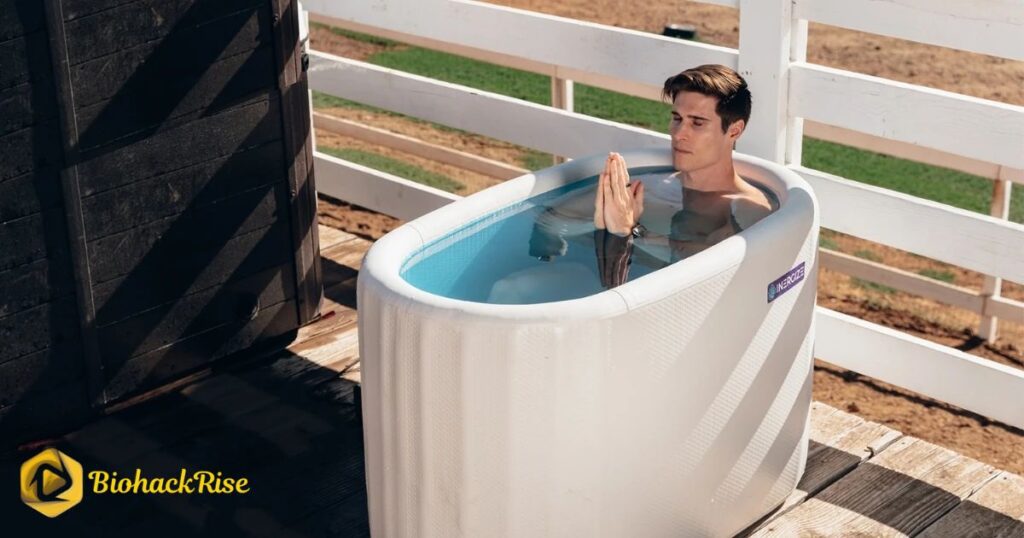
Cold plunges are no longer limited to elite athletes or high-end spas. Thanks to innovation and consumer demand, portable cold plunge tubs have become more accessible and affordable, making it easier than ever to add them to your sleep wellness routine.
Here’s why they’re ideal:
- Easy Setup: Most portable models take just minutes to inflate and fill.
- Compact Storage: When not in use, they can be folded and stored without taking up space.
- Temperature Control: Many come with insulated covers or connectable chillers to maintain ideal cold temps.
- Cost-Effective: Compared to permanent installations or professional cryo sessions, they’re far more budget-friendly.
Purchase Ice Bath Equipment Online
Thinking of taking the plunge? Buying a portable cold plunge tub or ice bath setup online is easier than ever. From Amazon to specialized wellness stores, you’ll find options for every budget and need.
Here are some popular models worth checking out:
- The Cold Pod
- Plunge by Edge Theory Labs
- Ice Barrel
- iCedragon Cold Tub
Mental and Physical Calmness from Cold Water
Cold water immersion is often seen as an extreme practice, but for many, it’s a meditative experience that brings deep mental clarity and physical calm.
Physiologically, cold water immersion lowers your core body temperature, reduces heart rate and stimulates the parasympathetic nervous system.
Breathwork and Cold-Water Synergy
Breathwork and cold exposure go hand in hand especially when your goal is relaxation and sleep improvement.
Controlled breathing during cold immersion helps regulate your heart rate, lower stress hormones, and prevent panic responses.
One of the most popular techniques is the box breathing method:
- Inhale for 4 seconds
- Hold for 4 seconds
- Exhale for 4 seconds
- Hold for 4 seconds
Cold Exposure Sleep Hacks
If you’re looking to fine-tune your cold exposure practice for better sleep, here are some practical sleep hacks to get more from every session:
Use a Pre-Sleep Checklist: Pair cold exposure with no screens, dim lights and light stretching to maximize its sleep-inducing effects.
Sleep in a Cold Room: Reinforce cold signals by keeping your bedroom at 60–67°F (15–19°C).
Layer with Weighted Blankets: After cold immersion, a weighted blanket can enhance the parasympathetic response even more.
Go Barefoot for 10 Minutes Post-Exposure: These grounds you and encourages natural rewarming, signaling sleep preparation to the body.
Use Blue Light Glasses: If you must use screens after your cold therapy, wear blue light-blocking glasses to protect your melatonin cycle.
Sleep Improvement with Cold Plunges
We can’t overstate the cumulative effect of cold plunges on sleep improvement. Regular use leads to:
- Reduced sleep latency (you fall asleep faster)
- Increased sleep efficiency (more deep sleep, less wake time)
- Enhanced recovery (especially from workouts or stress)
- More vivid dreams and fewer interruptions during the night
Where to Get Cryotherapy Near Me?
To find a center near you, just search “cryotherapy near me” in Google or Yelp. You’ll likely find a range of options, including:
- Wellness clinics
- Sports recovery center
- Chiropractic offices
- High-end gyms or spas
Choosing the Right Cryotherapy Center
Picking the right center can make a huge difference in your results. Since cryotherapy is an intense experience even if brief, you want to feel secure and relaxed during your visit. Here’s how to pick a place that checks all the boxes:
- Ask About Equipment:
Modern cryo chambers are typically electric, not nitrogen-based. Electric units offer more consistent cooling and safety. Confirm which system the clinic uses.
- Check for Trained Staff:
Sessions should be supervised by certified technicians who can help you ease in, answer questions, and monitor your response.
- Compare Prices and Packages:
Prices range from \$30 to \$75 per session depending on your location. Membership or bundle deals can reduce the cost significantly if you go regularly.
- Evaluate Atmosphere and Amenities:
Clean changing rooms, calming music, pre-session prep, and post-session perks (like massage chairs or saunas) can elevate your experience.
- Accessibility and Hours:
Since evening sessions are optimal for sleep benefits, make sure the center has evening availability or flexible hours that match your routine.
Cold Exposure Gear for Better Sleep
For those not quite ready for ice baths or cryo chambers, there’s another level of cold exposure: gear designed for sleep support.
Think of it as passive cold therapy, you don’t need to soak or stand in freezing air, but you can still benefit from subtle cooling tools throughout the night.
Here are some cold exposure products tailored to better sleep:
- Cooling Weighted Blankets: They provide pressure therapy plus a cooling sensation, perfect for calming anxiety and reducing night sweats.
- Chill Sleep Pads (like OOLER or Sleepme): These sit on top of your mattress and regulate your bed’s temperature throughout the night using water or air circulation.
- Cooling Sleepwear: Made with moisture-wicking, breathable fabrics that maintain a cooler body temperature.
- Cooling Eye Masks and Neck Wraps: These target specific body parts known for heat retention and help induce a calming effect before sleep.
- Cryo Gel Packs: Slip these under your pillow or on sore muscles pre-bed to promote calm and lower inflammation.
Safety Tips for Using Cold Therapy Gear
Cold exposure is powerful, but it’s also important to use it responsibly. Whether you’re using DIY ice baths, cryo chambers or passive gear, following safety guidelines ensures you get the benefits without unintended consequences.
Here are key safety tips:
- Start Slow: Begin with short sessions (2–3 minutes for showers, 5–7 minutes for plunges) and gradually build up.
- Never Go in Alone (at first): If you’re new to ice baths, have someone nearby in case you feel dizzy or overwhelmed.
- Monitor Temperature: Keep water temps above 50°F (10°C) unless advised otherwise by a professional.
- Know When to Stop: Numbness, tingling, or shivering that won’t stop are signs to get out and warm up.
- Warm Up Gradually: Use a towel, robe or socks, don’t jump into a hot shower immediately after an ice bath as it can shock your system.
- Avoid Alcohol Before Cold Exposure: Alcohol affects blood flow and body temperature regulation.
Does Cold Exposure at Night Really Help You Sleep Better?
Dr. Andrew Huberman, a leading neuroscientist, has often talked about the benefits of cold exposure, especially the Huberman cold plunge protocol. According to his findings, practices like cold plunge before bed or a quick cold shower at night can naturally boost dopamine levels, helping you feel more alert during the day and more relaxed at night.
These methods, such as the cold plunge protocol or even just ice water before bed, are simple and science-backed ways to support better sleep and recovery.
If you’ve ever wondered, “Should you cold plunge before bed?”, the answer depends on how your body responds. Many people find that an ice bath at night or even a short cold shower before bed helps calm the mind and reduce body temperature, which signals to the brain that it’s time to sleep.
Whether it’s a full ice bath before bed or cold showers at night, these cooling habits can promote deeper rest and more refreshing mornings. Try adding cold exposure to your routine and see if it helps you sleep better.
FAQ’s
How long before bed should I take a cold shower?
Aim to take your cold shower about 60 to 90 minutes before you plan to sleep.
Can cold therapy really replace melatonin?
Cold therapy helps stimulate your body’s natural melatonin production by aligning core body temperature with your circadian rhythm.
What temperature is best for a sleep-enhancing ice bath?
Between 50°F and 59°F (10°C to 15°C) is ideal for most people.
Are portable ice baths safe to use every night?
Yes, when used correctly. Just keep sessions under 10 minutes and always warm up naturally afterward.
How soon can I expect results from cold exposure?
Some people report better sleep after just one or two sessions, while others may take a week or more.
Conclusion
If you’re struggling with poor sleep, waking up groggy, or just want to optimize your nightly rest, cold exposure might be the most underrated solution in your toolkit. From cold showers and ice baths to cryotherapy and cooling gear, the options are vast and versatile. The science is clear: lowering your body temperature before bed improves your ability to fall asleep faster, stay asleep longer, and enter deeper, more restorative sleep stages.
Whether you go all-in with a portable plunge tub or just start with a 3-minute cold shower, consistency is key. Make it part of your nightly ritual, like brushing your teeth or dimming the lights. Pair it with good sleep hygiene, mindful breathing, and a calm environment, and you’ll soon experience the life-changing magic of truly restful sleep.

